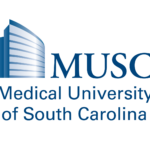I am an Assistant Professor in the Department of Psychiatry and a licensed clinical psychologist with more than 10 years’ experience using brain imaging and brain stimulation to understand cognitive and emotional control. My research interests in the mechanisms of cognitive control began as an undergraduate at Harvard College. There I worked on a project that essentially asked the question: “Why do some Vietnam combat Veterans develop debilitating cognitive and emotional disruption while others do not?”This study of individual differences is in many ways similar to my current research direction in neuropsychiatric rehabilitation research. These interests were extended at the University of Florida where I published 16 manuscripts (7 first author) on the behavioral and neural basis for fear and anxiety while working with Dr. Peter Lang, one of the world’s leading experts in cognitive and affective neuroscience. While understanding the fundamental neurobiological basis of fear and anxiety is intellectually interesting, my career goal is not just to understand these network disruptions, but also to develop innovative treatment methods that can renormalize these neural networks and restore behavior. Consequently, I pursued a postdoctoral fellowship with Amit Etkin, MD, PhD, at Stanford University where I was able to combine advanced neuroimaging techniques with simultaneous neuromodulation, i.e., concurrent or interleaved transcranial magnetic stimulation (TMS)/fMRI imaging.
This technique allows investigators to causally demonstrate the effects of perturbation of a single brain region on the neural activity in other connected nodes. In 2014, I received a K23 and initiated a tenure-track position at MUSC where I am using the functional MRI and TMS skills I have acquired along my career development pathway to investigate the functional integrity and neuroplasticity potential of emotional and cognitive regulation neurocircuitry on patients with PTSD. The primary goal of the proposed NVI application is to harness an emerging technique in cognitive and affective neuroscience (concurrent TMS-fMRI) to identify the most promising targets for rTMS for MCI. I am well- suited to ensuring that the proposed investigation is successfully executed. While continuing to optimize rTMS interventions for anxiety and depression using TMS-fMRI, I have branched out and am now a Junior Investigator in the Phase 2 COBRE for Stroke Recovery here at MUSC (PI Steve Kautz, Ph.D.). I have proposed to utilize concurrent TMS-fMRI to identify novel targets for rTMS to promote neurocognitive rehabilitation in chronic stroke. Importantly, extending my work to neurodegenerative disorders has been supported by the collaboration between the Brain Stimulation Laboratory in the Department of Psychiatry, of which I am a member, and the NICHD-funded National Center for Neuromodulation for Rehabilitation here at MUSC of which I am an executive committee member. My established interdisciplinary collaborations and support at MUSC will be leveraged for the success of this project in MCI/AD.


